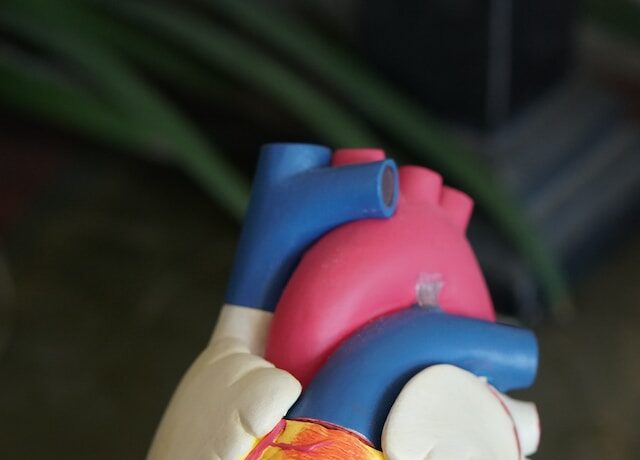External Defibrillators: How They Operate and Why They’re Important for Life-Saving

The human heart can be unpredictable and merciless, causing heart attacks and sudden cardiac arrests. But, because of advances in technology, we now have a potent tool at our disposal to combat these life-threatening emergencies: external defibrillator. These devices function by shocking the heart with electricity to restore its normal rhythm and perhaps save lives. We’ll examine how these vital devices function in this blog post and why both healthcare experts and regular people need them. Thus, fasten your seatbelts and get ready to learn about one of the most vital medical devices available; who knows? It might one day save a life!

An external defibrillator is what?
A portable device called an external defibrillator shocks the heart with electricity to treat sudden cardiac arrest. The shock aids in the heart’s recovery and returns to its regular beat. When a person’s heart stops beating and they are not breathing, external defibrillators are employed.
Public areas including airports, arenas, corporate buildings, and schools all have external defibrillators. Several fire and police departments also have them. The majority of defibrillators are automated, which means that if they notice an irregular heart rhythm, they will instantly shock the user.
Use of external defibrillators is simple and doesn’t call for any particular training. It’s crucial to pay close attention to the directions, though. You should either contact 911 or seek a nearby person for assistance if you are unsure how to use an external defibrillator.
How exactly do external defibrillators function?
A cardiac arrest victim’s heart receives a therapeutic dose of electrical energy from an external defibrillator. The aberrant cardiac rhythm is stopped by this powerful shock, which enables the heart to recover its regular sinus rhythm.
In emergency instances where someone experiences abrupt cardiac arrest, external defibrillators are employed (SCA). SCA happens when the heart stops beating suddenly and unexpectedly. When this occurs, the blood supply to the brain and other important organs is cut off. SCA is a medical emergency that needs to be treated right now.
Making a 911 call is the initial step in treating SCA. Upon their arrival, emergency medical personnel will evaluate the situation and decide whether an external defibrillator is required. The patient will be attached to an external defibrillator and given an electric shock if one is available.
External defibrillators are simple to operate and don’t need much training. Most gadgets contain instructions that even someone without medical knowledge can follow. Several public areas, including airports, retail centres, and office buildings, have external defibrillators. They can be discovered in some houses and cars as well.
External defibrillators prevent death by treating SCA in a timely manner. They should be easily accessible in all public areas because they are a crucial component of our healthcare system.
Why is it important to have external defibrillators?
A cardiac arrest occurs when the heart stops beating, necessitating rapid medical care. A defibrillator is a machine that shocks the heart with electricity to assist in restarting it. Because external defibrillators are portable and user-friendly, they are crucial for saving lives in public spaces and in neighbourhoods.
In an emergency, external defibrillators are simple to use and can save lives. These can frequently be found in public locations like train stations, airports, and shopping malls. They are also available on-site at several companies in case of an emergency. In the event of a cardiac arrest, more people can be saved if external defibrillators are available.
As cardiac arrests can occur at any time and to anybody, it’s critical that as many individuals as possible are trained in the use of an external defibrillator. The devices themselves typically come with instructions, making them easy to use. Anyone can feel confident using an external defibrillator to save a life with the right training.
Methods for using a Defibrillator
When someone is having a cardiac arrest, an external defibrillator is a life-saving tool that can be used to shock the heart back into a normal rhythm. We’ll go over how to use an external defibrillator in this post, along with why they’re so important for saving lives.
When the heart suddenly stops beating, it is known as cardiac arrest. This usually happens because of an electrical issue. Blood flow to the brain and other crucial organs is cut off as a result. A regulated electrical shock from an external defibrillator can frequently get the heart back to its regular rhythm.

First, make sure the patient is resting flat on their back on a solid surface before using an external defibrillator. Attach the pads to the AED (Automatic External Defibrillator) in accordance with the directions provided if it is not already connected. Press the AED’s “shock” button once the pads are in position. The right strength of shock will be automatically delivered by the machine.
It’s critical to keep in mind that only qualified persons should use an AED because there is a slight possibility that improper use could result in injury. Nonetheless, even inexperienced people may frequently perform CPR (cardiopulmonary resuscitation) while another person gets the AED and gets it ready.
There are external defibrillators in many public locations, including airports and shopping centres, as well as in some private residences. They’re simple to utilise.








